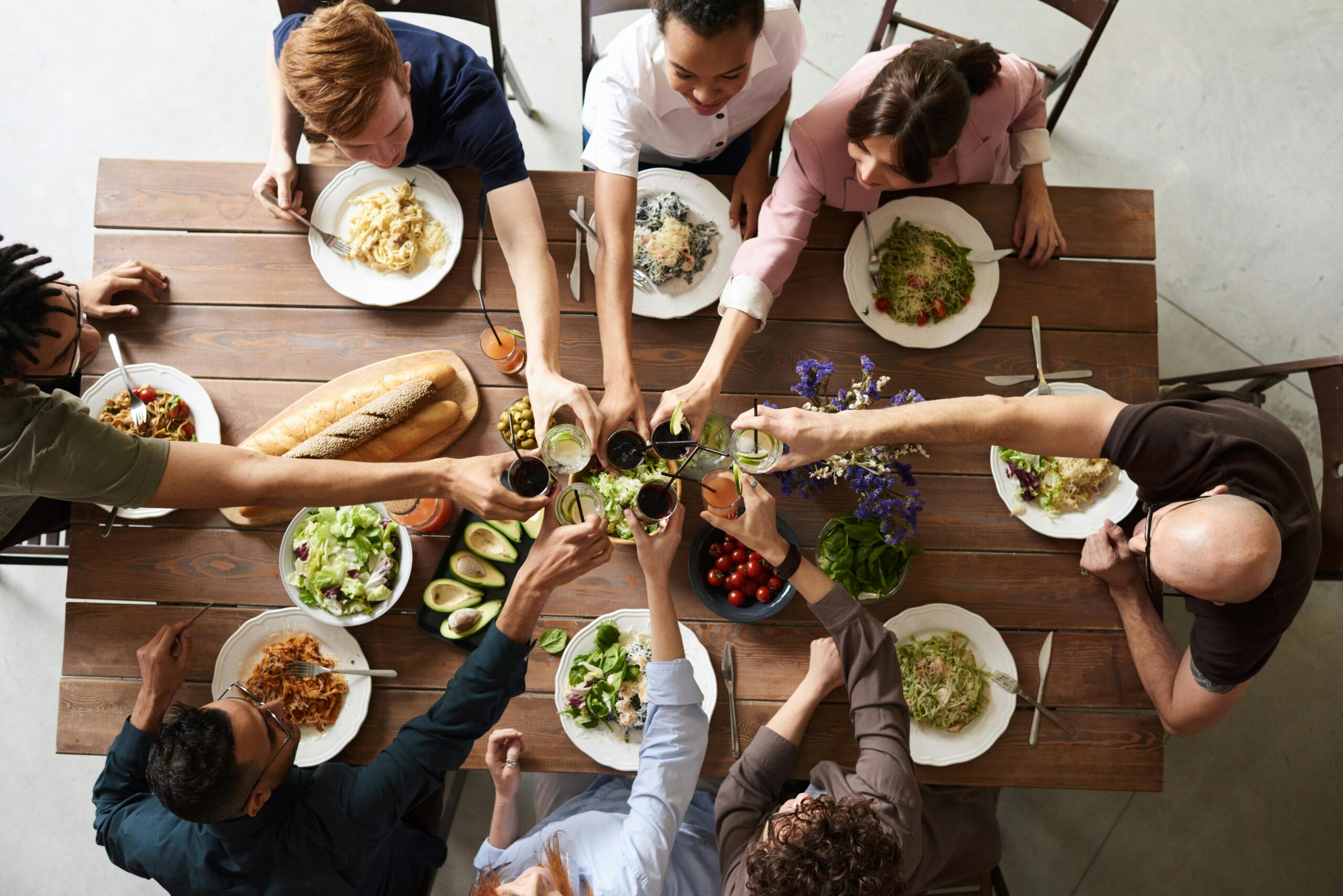
Christmas feasts vary across regions
Christmas traditions greatly vary across Europe, but one thing is common: everyone tends to eat abundantly.
The British aren’t choosy
During a traditional English family’s Christmas meal, the starters are usually prawns and smoked salmon, followed by roast turkey as the main course – the bigger the better. It is served with roasted or steamed vegetables and gravy, a thick sauce made from meat juice. Despite the fact that very few people like it, steamed Brussels sprouts are an essential part of the menu. Also very popular are the various meat pies, which are filled with sauces as well as meat.
This is followed by a Christmas pudding, full of dried fruits and various Christmas spices, accompanied by brandy.
Mince pie is also rather common. Originally, it was also stuffed with meat, but nowadays there are many variations, with meat-and-fruit fillings, or just with fruit.
The cake that comes in the shape of a little nest symbolises baby Jesus’s manger, and superstition has it that if the filling is made at home, good luck will come to the house.
Another feature of the Christmas table is the so-called „Christmas cracker,” a cylinder made of stiffer paper. You have to grab it by the two ends and pull it so that the cylinder breaks, prompting the little gifts to start falling out.
Demons can’t hurt you if your belly is full
In Germany, people traditionally tend to eat a lot,
as folklore has it that during the Christmas holidays, those with a full belly are shunned by demons.
It’s no wonder, then, that one of the Germans’ favourite Christmas dishes is roasted goose with steamed cabbage.
Not only do Germans love to eat well, but they are also very fond of sweets, and one of the most typical German Christmas sweets is called stollen. It is essentially a milk-loaf made with nuts, spices and fruit, and topped with a dusting of icing sugar or coated with marzipan. Stollen is most commonly served on Christmas Eve in families in Saxony, from where it traditionally originated. Families are known to be preparing the so-called Dresden stollen as early as in the 15th century.
In many places, sausages and potato salad are on the table on Christmas Eve. In fact, the truth is that the price of food has risen so much this year that many families are forced to settle for this simple – but traditional – menu this year.
Pasta, cookies – and, of course, fish
The Italian peninsula boasts a great variety of traditional Christmas dishes, similar to the different varieties of when exactly the locals celebrate Christmas. In the central and southern territories, the big feast is on the evening of the 24th, while in the north, lunch on the 25th is a more important meal.
The rules on what to eat are also quite specific. On the evening of 24 December, lean meats and fish are customary, but on the 25th, home cooks are allowed to use their imagination. There are, however, mandatory dishes like dried fruits and panettone.
In the Valle d’Aosta region, in the north of Italy, Christmas specialties include the carbonade, or beef cooked in red wine, the honeyed, dried and flavoured goat and the crostini filled with mutton sausage.
In Lombardy, perhaps unsurprisingly, one of the most traditional dishes is eel fried in foil, while people in Veneto prefer to consume polenta with salted cod and boiled meat with sauces.
In Central Italy, the best-known traditional dishes are variants of tortellini and passatelli, which are strictly served in meat soup. Main dishes prepared in the region include tagliatelle and lasagne, tortelli di zucca and alle erbette, prosciutto and culatello.
There are, however, exceptions. In Modena, people have fish, especially in preserved form. The big favourites are tuna, mackerel, anchovy and tomato spaghetti, as well as steamed or fried and salted cod.
Champagne, and lots of sea fruit
The French tend to celebrate Christmas is family circles. The laid table attracts plenty of relatives, who gather and talk for hours during the festive meal. The traditional French festive dinner always starts with an appetiser, which is usually some kind of seafood, typically lobster, crayfish, scallops, oysters or snails. Foie gras, the French favourite, is also an important dish on the festive table, just like salmon for those who like fish. Appetisers are followed by the main course, which is most often turkey stuffed with chestnut or fried capon. Game and fish are also extremely popular, and they are often consumed with vegetables or grilled mushrooms on the side. For dessert, French people traditionally have a cake called Yule log. It has many variations today, but the original recipe instructs the cook to mix the butter filling with cocoa powder, then spread it on a sheet of sponge cake, roll it up and coat it with chocolate.
According to that tradition, 13 desserts must be served, which are usually dried candied fruits, local sweets and pastries, and nougat.
In Alsace, the region bordering Germany, pastries have been essential elements of Christmas dinners for centuries, and can be found in all shapes. The fruit bread called Christolles, for example, has Christmas motifs such as the baby, the star, the pine tree, the moon and the cross.
Regarding the drinks consumed with the festive dinner,
Christmas in France is unimaginable without champagne. Most of this beverage is sold in the last three months of the year.
Champaign suits both the fish and the fois de gras served as appetiser, but with desserts, the French usually drink wine.
Brioche, fish, mushrooms and cabbage
In Central Europe, in the Visegrad countries, people are hosting huge family dinners on Christmas Eve, 24 December. And the dishes you can’t miss are often linked to some old folklore tradition.
In Hungarian families, the Christmas tree is usually put up on 24 December, and a big feast is held on Christmas Eve, with plenty of delicacies on the festive table. Since many families have a tradition of slaughtering pigs before Christmas, stuffed cabbage and different kinds of sausages are usually on the Christmas menu. But fish soup and fried fish are also a must in many places, as well as ‘bejgli’, a traditional Christmas rollcake stuffed with ground walnut or poppy seed filling.
Slovak families have a wide variety of Christmas traditions, with each region having its own menu for the holidays. The most common dishes in the east of the country are mushroom and sour soups, as well as pierogi, but there are also dishes related to Russian, Ukrainian and Ruthenian cuisine and specialties, such as waffles with honey and garlic or fried raised dough, which is mainly rolled in poppy seeds. A typical Slovak Christmas dish is cabbage soup, of which there are several variations, and in areas inhabited by ethnic Hungarians, fish soup is also on the table.
Tags:

